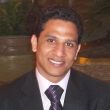11:30 - 13:00 Computational aerodynamics
Turbine technology


Room: Hall G2
The session deals with aerodynamics, in particular computational aerodynamics. The session investigates a typical enginering blade element momentum (BEM) aerodynamic model, and demonstrates the merits of less empiric but computationally more comprehensive CFD modelling for yawed conditions and for tip vortex breakdown. We will also discuss the validation by 2D wind tunnel tests for high Reynolds numbers and how to use aerodynamics computations to analyse the effect of protuberances on blades.
You attended this session?
Learning objectives
- Understand and assess the limitations of engineering computational aerodynamics tools versus CFD;
- Understand opportunities and challenges of using CFD for aerodynamic computations;
- Understand uncertainties of wind tunnel tests for validation of computational eaerodynamics;
- Understand how protuberances on blades may affect performance.
This session will be chaired by:


Presenter

Co-authors:
Mohamed Sayed (1) F Thorsten Lutz (1) Ewald Kraemer (1)
(1) University of Stuttgart, Stuttgart, Germany
Presenter's biography
Biographies are supplied directly by presenters at WindEurope Summit 2016 and are published here uneditedMohamed A. Sayed is currently a PhD candidate at Stuttgart University working in the field of Wind Energy since 2009. Since 2004, he has been worked as a Teaching Assistant at the faculty of Engineering at different universities in Egypt. Also worked since as numerical analysis and mechanical design engineer in Research and Development (R&D) at different national and international companies in Egypt. His research areas of interest are: Wind Energy, Computational Fluid Dynamics, Unsteady Flows Problems, Multi-disciplinary Areas of CFD/Dynamics/Structure Interaction, Fluid/Heat Transfer Multi-physics Problems, Aero-elastic simulation of the wind turbines.





Follow EWEA on: